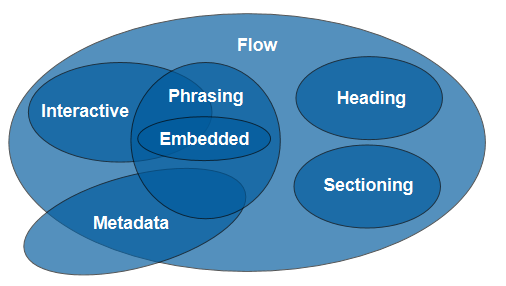Content Models in HTML5
Each HTML element belongs to at least one content model.
Types of content:
- Block level – appear on separate lines, taking up the full width of a line,
- Inline level – appear in the normal flow of the document, taking up only as much space as needed.
Thus, there are 7 content models developed to extend the structural and semantic capabilities of HTML5:

- Metadata content – defines the presentation or behavior of the rest of the content, or establishes the document's relationship with other documents, or conveys information unrelated to the document itself;
- Flow content – usually contains text or embedded content;
- Sectioning content – sectioning elements that define the purpose of headings and footers;
- Heading content – defines the header of a section;
- Phrasing content – is the text of the document, as well as elements that mark up that text at the inline (intra-paragraph) level;
- Embedded content – content that imports another resource into the document;
- Interactive content – content specifically intended for user interaction.
Some of these models behave as Block Level, others as Inline Level.
Much more detailed information can be found in the specialized documentation W3 – Content models
